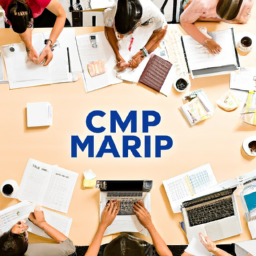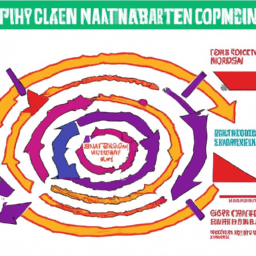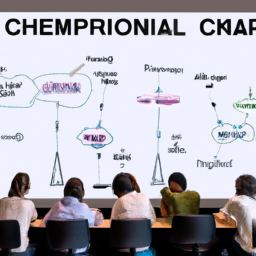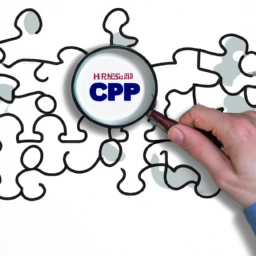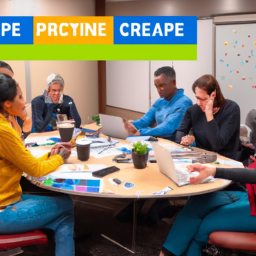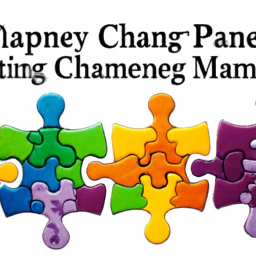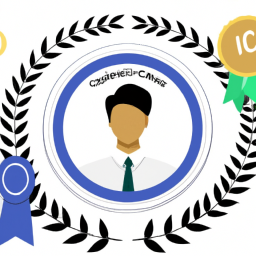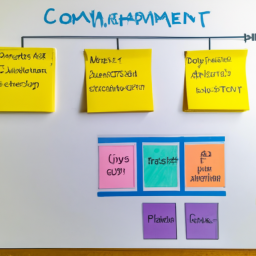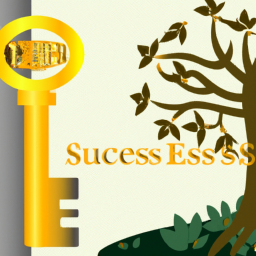Are you ready to level up your skills?
The CCMP exam is your ticket to mastering 10 essential skills that will transform your career.
You’ll gain a deep understanding of change management principles, develop effective stakeholder engagement strategies, and implement impactful change communication plans.
Get ready to analyze organizational readiness, apply change leadership techniques, and assess change impact and risk.
Don’t miss out on managing resistance, evaluating success, and adapting strategies.
The CCMP exam is your key to becoming a change management superstar.
Key Takeaways
- Change management principles are crucial for planning, executing, and controlling organizational transitions.
- Developing stakeholder engagement strategies is important for understanding and addressing the needs and interests of key stakeholders.
- Implementing change communication plans effectively minimizes confusion and drives successful change initiatives.
- Analyzing organizational readiness for change provides valuable insights into change readiness and is essential for effective change leadership.
Understanding Change Management Principles
Understanding change management principles is crucial for success in the CCMP exam. By learning about change management techniques and understanding how to implement them effectively, you will gain essential skills that are highly valued in today’s fast-paced business environment.
Change management is the process of planning, executing, and controlling the transition of an organization from its current state to a desired future state. It involves identifying and addressing potential barriers to change, managing resistance, and ensuring that the change is adopted and sustained.
Through the CCMP exam, you will develop a deep understanding of change management principles and best practices, enabling you to effectively navigate and lead change initiatives in your organization. This knowledge will not only enhance your professional development but also contribute to the overall success of your organization.
Developing Stakeholder Engagement Strategies
When developing stakeholder engagement strategies, it’s important to identify key stakeholders and their unique needs and interests. This is crucial because engaging stakeholders effectively can greatly contribute to the success of any change initiative.
One way to do this is by using change impact assessment techniques. These techniques help you understand the potential effects of the change on different stakeholders and their level of influence. By assessing the impact, you can tailor your engagement strategies accordingly.
For example, if a particular stakeholder group is highly impacted by the change and has a high level of influence, you may need to involve them more in the decision-making process and provide additional support and resources. On the other hand, stakeholders with low impact and influence may require less attention.
Implementing Change Communication Plans
Implementing change communication plans involves:
- Identifying key messages
- Selecting appropriate communication channels
- Engaging stakeholders in a clear and consistent manner.
By following this process, you can effectively communicate the changes happening within your organization and ensure that everyone is on the same page.
One way to streamline this process is by using templates for your communication plans. Templates provide a structured framework for organizing your messages and selecting the most effective channels for reaching your stakeholders. They also save time and effort by providing a starting point that can be customized to fit your specific needs.
By utilizing templates, you can ensure that your change communication plans are comprehensive, well-organized, and easy to execute. This will help to minimize confusion, increase transparency, and ultimately drive successful change initiatives.
The next step in this process is analyzing organizational readiness for change.
Analyzing Organizational Readiness for Change
Assessing the organization’s readiness for change is a crucial step in determining if the proposed changes will be successful. Before implementing any organizational change, it is important to evaluate the readiness of the company and its employees. Here are three key factors to consider when conducting a change readiness assessment:
-
Leadership support: Determine if the leadership team is fully committed to the change and willing to provide the necessary resources and guidance.
-
Employee engagement: Assess the level of employee engagement and their willingness to embrace the change. This can be done through surveys, focus groups, or individual interviews.
-
Organizational culture: Evaluate how the current organizational culture may impact the change initiative. Identify any potential barriers or resistance that may arise.
By thoroughly analyzing these factors, you can gain valuable insights into the organization’s readiness for change and make informed decisions on how to proceed.
Transitioning into the subsequent section about applying change leadership techniques, it is important to have a solid foundation of change readiness assessment in order to effectively lead and navigate the change process.
Applying Change Leadership Techniques
Applying change leadership techniques requires a comprehensive understanding of the organization’s readiness for change. As a leader, it is essential for you to have the skills to navigate through the complexities of change implementation. Leadership development plays a crucial role in equipping you with these skills.
It helps you to cultivate the ability to inspire and motivate your team, communicate effectively, and manage resistance to change. By honing these skills, you can effectively guide your organization through the turbulent waters of change.
Change implementation is not an easy task, but with the right leadership techniques, you can create a positive and supportive environment that facilitates successful change. Remember, leadership development is an ongoing process that requires continuous learning and adaptation to the evolving needs of your organization.
Utilizing Change Management Tools and Templates
When it comes to change management, utilizing tools and templates can provide numerous benefits.
Templates, for example, offer a standardized and efficient way to document and track changes throughout the process.
Additionally, selecting the right tools can make a significant difference in maximizing efficiency and effectiveness in managing change.
Benefits of Templates
Using templates can significantly streamline your work process and save you time and effort. Here are three key benefits of using templates:
-
Standardization: Templates provide a consistent format and structure for your work, ensuring that all your documents are uniform and professional. This standardization reduces errors and improves overall quality.
-
Efficiency: Templates automate repetitive tasks, allowing you to quickly create new documents or complete specific tasks with just a few clicks. This automation saves valuable time and increases productivity.
-
Consistency: With templates, you can ensure that all your work follows established guidelines and best practices. This consistency not only improves the quality of your work but also enhances communication and collaboration with others.
Tool Selection Tips
To make the tool selection process easier, take into consideration your specific needs and requirements. When evaluating potential tools for implementation, it is important to choose ones that align with your goals and objectives. Consider the following factors when evaluating and selecting tools:
| Factor | Description |
|---|---|
| Functionality | Assess whether the tool has the necessary features and capabilities to meet your needs. |
| Usability | Evaluate the tool’s user-friendliness and ease of navigation. |
| Integration | Determine if the tool can seamlessly integrate with your existing systems and workflows. |
| Cost | Consider the financial implications of implementing and maintaining the tool. |
| Support | Research the level of customer support and resources provided by the tool’s vendor. |
Maximizing Efficiency Through Tools
Now that you have learned some tips for tool selection, let’s explore how to maximize efficiency through the use of these tools.
By selecting the right tools and utilizing them effectively, you can streamline your change management processes and achieve better outcomes. Here are three ways to maximize efficiency through tools:
-
Automation: Look for tools that offer automation capabilities to reduce manual effort and save time. Automated workflows, notifications, and reporting can help streamline repetitive tasks.
-
Collaboration: Choose tools that promote collaboration and enable effective communication among team members. Features like real-time commenting, document sharing, and task management can enhance teamwork and ensure everyone is on the same page.
-
Integration: Opt for tools that integrate with other systems and platforms you use in your organization. Seamless integration allows for data synchronization, eliminates the need for duplicate entry, and enhances overall efficiency.
By maximizing efficiency through tool selection, you can optimize your change management processes and achieve better results.
Now, let’s move on to the next topic: assessing change impact and risk.
Assessing Change Impact and Risk
In this discussion, you will explore the essential techniques for change analysis and methods for identifying risks. You will also learn strategies for assessing the impact of change.
Change Analysis Techniques
You’ll learn valuable change analysis techniques during the CCMP exam. These techniques will help you effectively analyze and understand the impact of change within an organization. Here are three key change analysis techniques that you’ll gain knowledge of:
-
Impact assessment: This technique involves identifying the potential consequences of a change and evaluating its effects on various aspects such as processes, systems, and stakeholders.
-
Root cause analysis: By using this technique, you’ll be able to identify the underlying reasons for a change and determine the factors that contribute to its occurrence. This helps in addressing the root causes and designing effective change strategies.
-
Gap analysis: This technique involves comparing the current state of an organization with the desired future state to identify any gaps or discrepancies. It helps in understanding the areas that require change and developing appropriate action plans.
Risk Identification Methods
To effectively identify and manage risks, it’s important to utilize various methods such as conducting risk assessments and engaging stakeholders in the process. By conducting risk assessments, you can systematically identify potential risks and evaluate their likelihood and impact. Engaging stakeholders, such as project team members and subject matter experts, allows for a comprehensive understanding of the project and its associated risks. Once risks are identified, it’s crucial to develop risk mitigation strategies to minimize their impact on project success. These strategies may include risk avoidance, risk transfer, risk reduction, or risk acceptance. Risk assessment techniques, such as the probability-impact matrix, can help prioritize risks based on their likelihood and potential consequences. By implementing these methods, you can effectively identify and manage risks, ensuring project success.
| Risk | Likelihood (1-5) | Impact (1-5) | Priority (LxI) |
|---|---|---|---|
| Supplier failure | 3 | 4 | 12 |
| Technology malfunction | 2 | 5 | 10 |
| Budget overrun | 4 | 3 | 12 |
| Regulatory changes | 3 | 2 | 6 |
Impact Assessment Strategies
When evaluating the impact of risks, it’s important to consider potential consequences and develop strategies to mitigate their effects. To effectively assess the impact of risks, you can utilize various techniques and strategies. Here are three impactful strategies to consider:
-
Quantitative Analysis: This involves using mathematical models and data analysis to quantify the potential impact of risks. It helps in determining the probability and severity of each risk, allowing you to prioritize and allocate resources accordingly.
-
Qualitative Analysis: This approach focuses on understanding the qualitative aspects of risk impact. It involves evaluating the likelihood of risks occurring and the potential severity of their consequences. Qualitative analysis helps in identifying and prioritizing risks based on their potential impact on project objectives.
-
Scenario Analysis: This technique involves developing hypothetical scenarios to assess the potential impact of risks. By creating different scenarios, you can evaluate the consequences of risks and develop appropriate risk mitigation strategies.
Managing Resistance to Change
Managing resistance to change can be challenging, but it is an essential skill you’ll develop through the CCMP exam.
As a change manager, you will encounter individuals and groups who resist the changes you are implementing. It is crucial to have effective techniques for managing resistance to ensure the success of your change initiatives.
One such technique is conducting a change impact assessment. This involves identifying potential areas of resistance and evaluating the impact of the changes on various stakeholders. By understanding the concerns and expectations of those affected by the change, you can develop strategies to address their resistance proactively.
This may include providing clear communication, offering training and support, involving stakeholders in the decision-making process, and building a culture of trust and openness.
Developing these skills will enable you to navigate through resistance and facilitate successful change within your organization.
Evaluating Change Success and Lessons Learned
In this discussion, you’ll explore the importance of evaluating change success and learning from failures.
You’ll discover various success measurement techniques that can help you track the progress and effectiveness of your change initiatives.
Additionally, you’ll learn about continuous improvement strategies that can be implemented to ensure ongoing success and growth.
Success Measurement Techniques
One of the essential skills you’ll gain from the CCMP exam is understanding success measurement techniques. These techniques are crucial for evaluating the effectiveness of change initiatives and ensuring that desired outcomes are achieved.
Here are three success measurement techniques that you will learn:
-
Key Performance Indicators (KPIs): KPIs are measurable metrics that help organizations track progress towards their goals. By defining and monitoring specific KPIs, you can assess the success of a change initiative and make data-driven decisions.
-
Surveys and Feedback: Gathering feedback from stakeholders through surveys and interviews can provide valuable insights into the perceived success of a change. This qualitative data can help identify areas for improvement and guide future decision-making.
-
Change Analysis Techniques: These techniques involve analyzing the impact of a change on various aspects of the organization, such as processes, systems, and employee satisfaction. By conducting thorough change analysis, you can measure the overall success of the change and identify any unintended consequences.
Understanding and applying these success measurement techniques will enable you to effectively evaluate and measure the success of change initiatives, leading to continuous improvement and organizational growth.
Learning From Failures
Take a moment to reflect on the valuable lessons that can be learned from failures.
Life is full of ups and downs, and it is through our failures that we truly grow. Learning from failures is an essential skill that will help you overcome obstacles and achieve success.
When you experience a setback or make a mistake, it’s important to analyze the situation and understand what went wrong. This self-reflection allows you to identify areas for improvement and develop new strategies for future endeavors.
By embracing failure as a learning opportunity, you can turn setbacks into stepping stones towards success. Remember, every failure brings you one step closer to your goals.
Continuous Improvement Strategies
By consistently seeking ways to improve, you’ll discover new strategies and techniques that can help you overcome obstacles and achieve even greater success. Continuous improvement techniques and performance management strategies are essential for individuals and organizations looking to thrive in today’s competitive landscape.
Here are three key strategies to help you enhance your performance and drive continuous improvement:
-
Set clear goals and objectives: Clearly define what you want to achieve and break down your goals into manageable steps. This will provide focus and direction, ensuring that you are working towards meaningful outcomes.
-
Foster a culture of learning and innovation: Encourage curiosity, creativity, and a willingness to try new approaches. Embrace failure as an opportunity for growth and learn from your mistakes to constantly refine and improve your performance.
-
Regularly assess and measure progress: Implement performance management systems to track your progress and identify areas for improvement. Collect and analyze data to gain insights into your strengths and weaknesses, and use this information to make informed decisions and drive continuous improvement.
Adapting Change Management Strategies to Different Situations
Adapting change management strategies to different situations allows for greater flexibility and effectiveness in achieving successful outcomes. Effective change implementation requires a customized approach that takes into account the unique characteristics of each situation. By tailoring your strategies to fit the specific needs and challenges of the organization, you increase the likelihood of successful change implementation.
To help you understand the importance of adapting change management strategies, here is a table that outlines different situations and the corresponding strategies that can be employed:
| Situation | Strategy | Benefits |
|---|---|---|
| Organizational | Clear communication | Increases employee buy-in |
| Cultural | Cross-cultural training | Facilitates smooth transition |
| Technological | Training and support | Reduces resistance |
| Structural | Change leadership | Ensures effective implementation |
As you can see, different situations call for different strategies. Adapting your approach will enable you to address the specific challenges and maximize the chances of successful change implementation.
Frequently Asked Questions
What Is the Format of the CCMP Exam and How Long Does It Typically Take to Complete?
The format of the CCMP exam includes multiple choice questions and scenario-based questions. It typically takes around three hours to complete.
To be eligible to take the exam, you need to have a minimum of 3,500 hours of change management experience.
There are external resources and study materials available to help you prepare for the exam, such as books, online courses, and practice exams.
Are There Any Prerequisites or Requirements for Taking the CCMP Exam?
To take the CCMP exam, you need to meet certain prerequisites and requirements. These include:
- Having a minimum of three years of professional experience in change management.
- Completing a minimum of 21 hours of formal change management education.
- Agreeing to adhere to the ACMP Code of Ethics.
Additionally, you must:
- Submit an application for the exam.
- Pay the required fees.
Meeting these prerequisites and requirements will qualify you to take the CCMP exam.
How Often Is the CCMP Exam Offered and Where Can I Find Information About Upcoming Exam Dates?
Looking to take the CCMP exam? You’re in luck! The CCMP exam is offered multiple times throughout the year, providing you with flexibility when it comes to scheduling.
To find information about upcoming exam dates and availability, you can visit the official CCMP website. There, you’ll also find details about the registration process and any prerequisites or requirements.
Don’t miss out on this opportunity to gain essential skills and enhance your professional development!
Can I Use Any External Resources or Study Materials During the CCMP Exam?
During the CCMP exam, you’re not allowed to use any external resources or study materials. The purpose of the exam is to assess your knowledge and understanding of the change management principles and practices.
To effectively prepare for the exam, it’s recommended to use the resources provided by the CCMP program, such as study guides and practice exams. Developing effective study strategies, such as creating a study schedule and practicing active learning techniques, can also greatly enhance your chances of success.
Is There a Passing Score for the CCMP Exam, and if So, What Is It?
Yes, there is a passing score for the CCMP exam. The passing score is set by the Association of Change Management Professionals (ACMP) and it is 70%.
This means that in order to pass the exam, you must score at least 70% on the total number of questions.
It is important to thoroughly study and prepare for the exam to increase your chances of achieving the passing score.
Conclusion
Congratulations! By passing the CCMP exam, you’ve gained not just 10, but an arsenal of essential skills. These skills will make you a change management mastermind. You’re now equipped with the knowledge to understand and implement change principles. Additionally, you can engage stakeholders effectively and communicate change plans with finesse.
With your expertise in assessing risk, managing resistance, and evaluating success, you’re a force to be reckoned with. So go forth, and conquer any change situation that comes your way!

